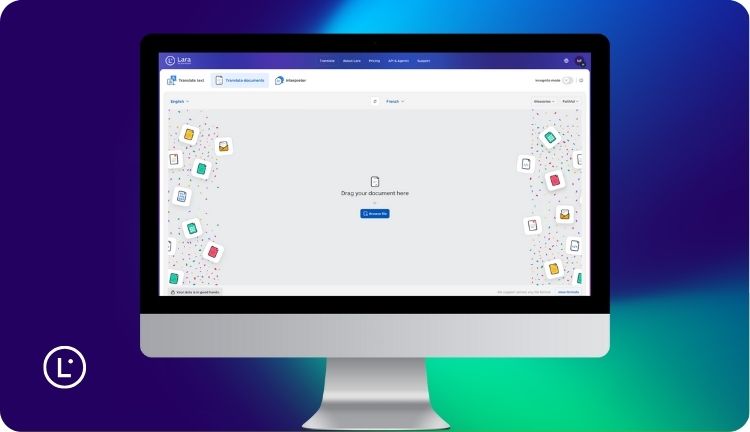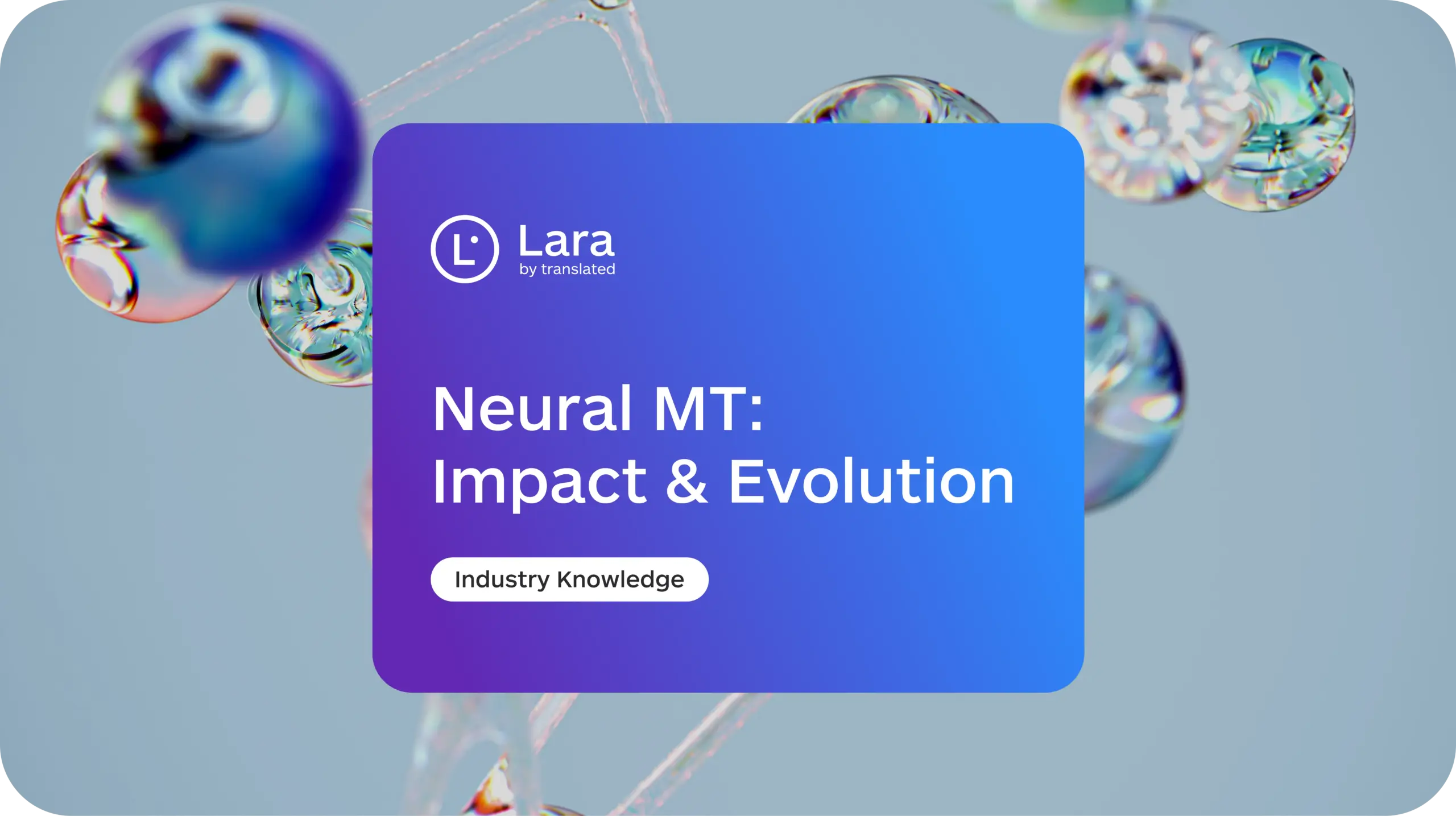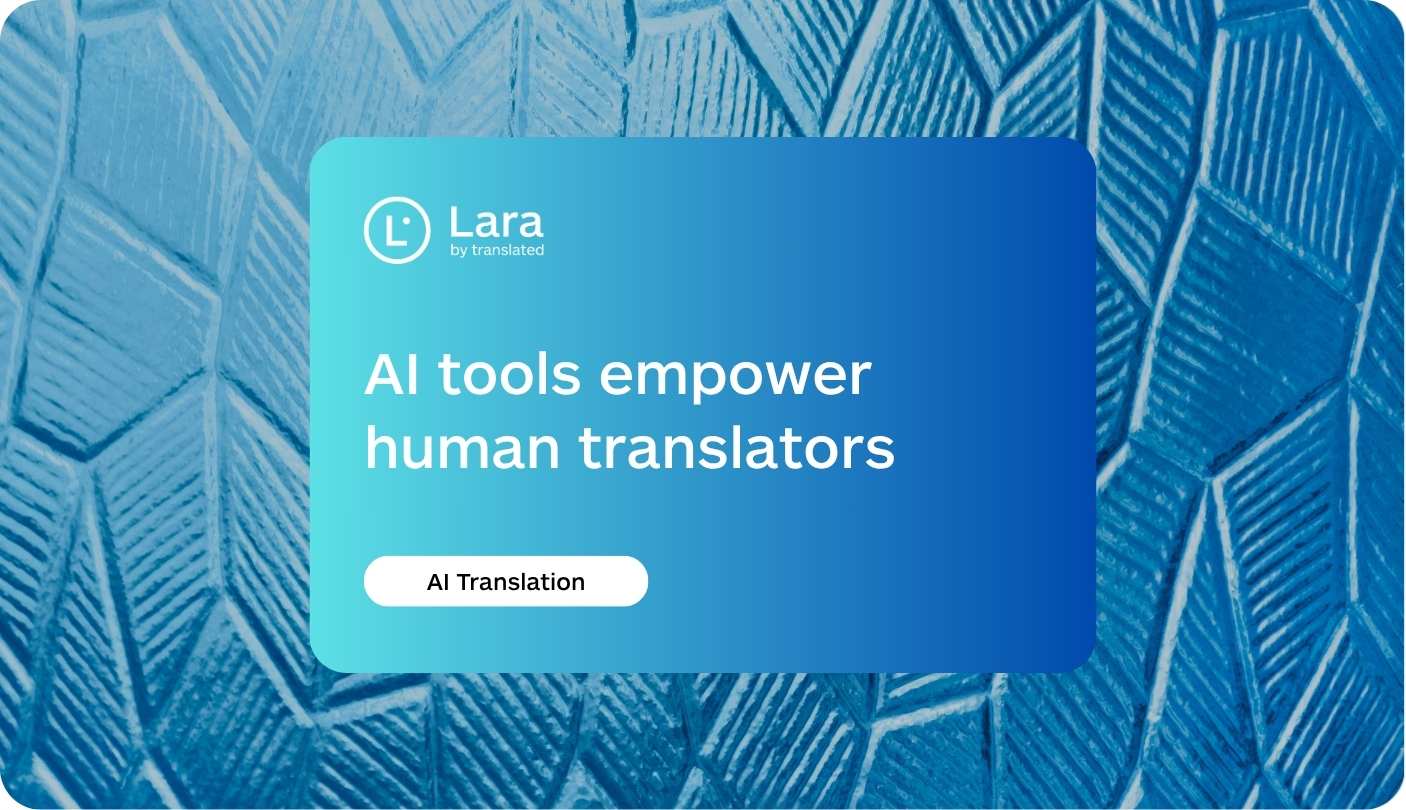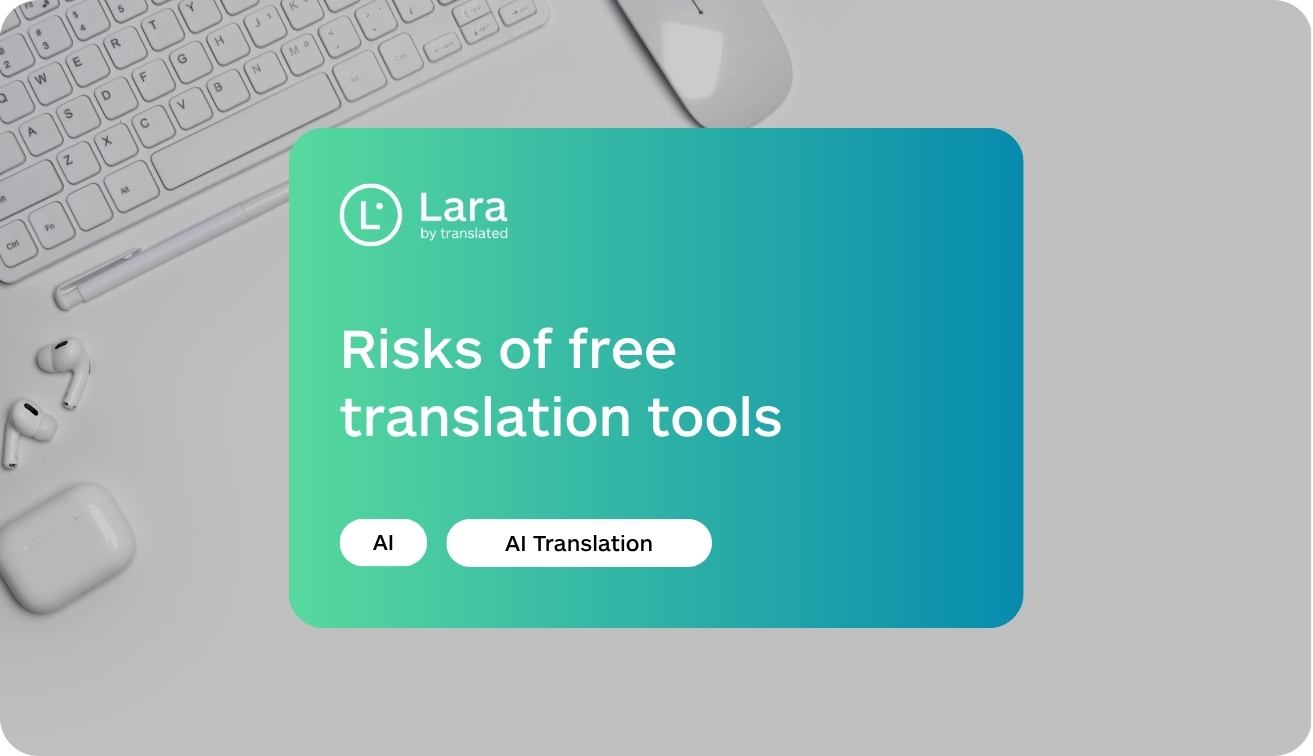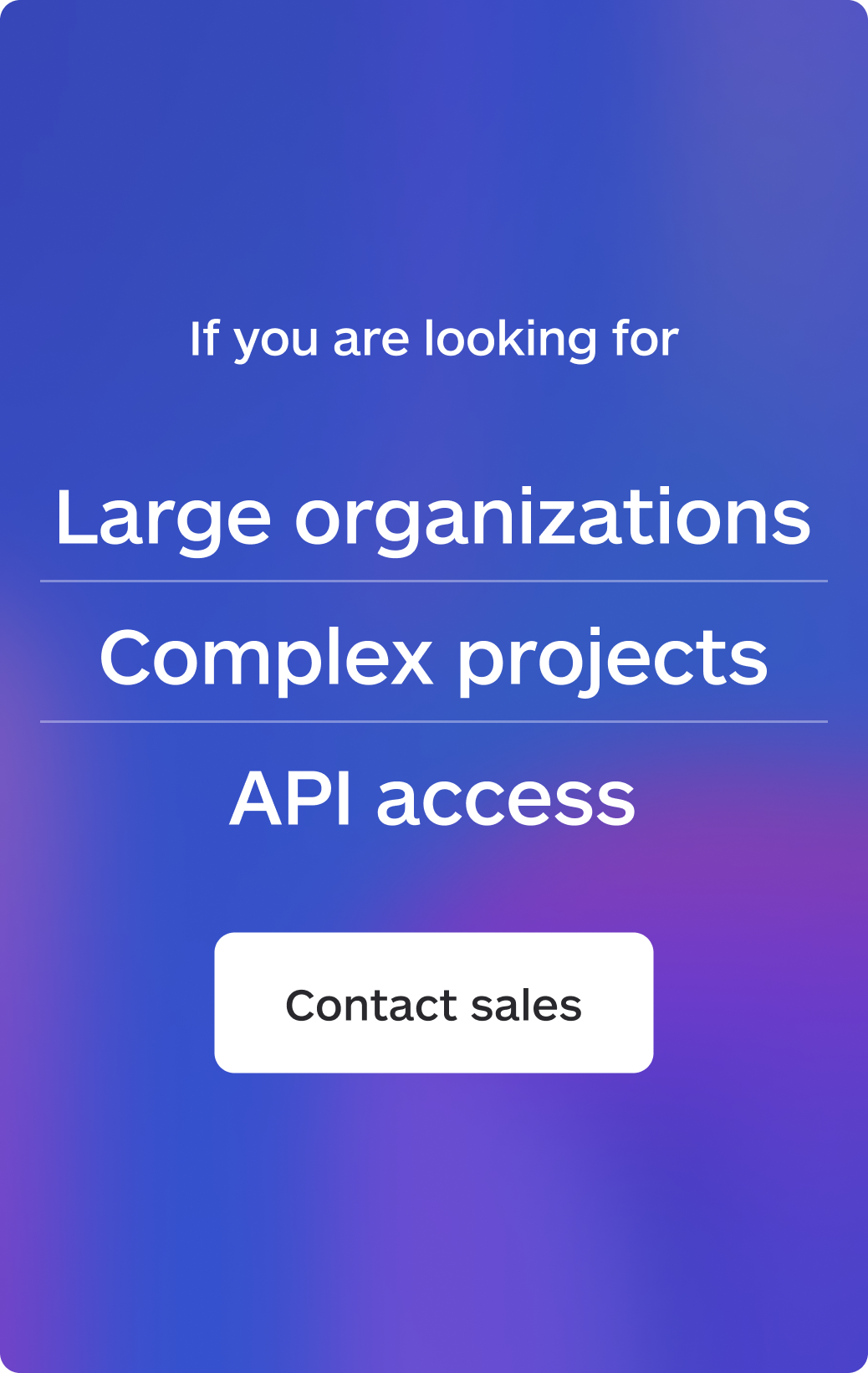AI translation has come a long way, and for companies looking to grow internationally, it’s becoming more and more important. But even as the technology gets smarter, accuracy is still a challenge especially when the message really matters.
The truth is, understanding how accurate AI translation is isn’t just a matter of numbers. It’s about knowing when you can rely on it and when it’s better to call in a human expert.
Modern tools powered by neural networks can deliver surprisingly good results, especially for common language pairs. Some claim up to 90% accuracy, which sounds great until that missing 10% causes a misunderstanding in a key business deal.
So the real question isn’t whether AI translation is perfect (we know it’s not). The real challenge is learning how to measure its strengths, spot its blind spots, and figure out when a human touch is not just helpful, but necessary.
[Accessibility 👂] Listen to a conversation about this article
How accurate is AI translation today?
Current AI translation accuracy varies significantly across different factors. Popular systems like Google Translate achieve around 90% accuracy for Spanish and 80-90% for Korean, Tagalog, and Chinese. However, for lesser-known languages like Farsi and Armenian, accuracy drops to 67% and 55% respectively.

These percentages tell only part of the story. Measuring AI translation performance requires looking beyond simple word-for-word accuracy to consider context, cultural appropriateness, and intended meaning preservation. A technically “accurate” translation might still fail to convey the original message effectively.
Accuracy in neural MT systems has improved dramatically since the introduction of transformer architectures and attention mechanisms. Modern systems better handle long-range dependencies and contextual relationships, leading to more natural-sounding translations. However, they still struggle with idioms, cultural references, and creative content where literal translation fails completely.
Business contexts demand higher accuracy standards than casual use. While 90% accuracy might suffice for understanding a foreign news article, it’s insufficient for legal documents, medical information, or marketing materials where precision directly impacts outcomes.
Factors affecting AI translation accuracy
Several key elements determine how well AI translation systems perform in real-world scenarios. Factors affecting AI translation accuracy include training data quality, language complexity, content type, and domain specificity.
Training data diversity plays a crucial role. Systems trained primarily on English-dominant datasets show bias toward English grammatical structures and cultural references. This explains why AI accuracy for different languages varies so dramatically, with European languages typically achieving higher accuracy than Asian or African languages.
Content complexity significantly impacts performance. Simple, straightforward text with standard sentence structures translates more accurately than complex documents with technical jargon, legal terminology, or creative elements. Cultural context poses another challenge—AI systems lack the cultural understanding necessary to adapt content appropriately for different audiences.
Domain specialization affects accuracy substantially. Medical, legal, and technical documents require specialized vocabulary and contextual understanding that general-purpose translation systems often lack. This is where specialized translation tools or human post-editing for accuracy becomes essential for maintaining quality standards.
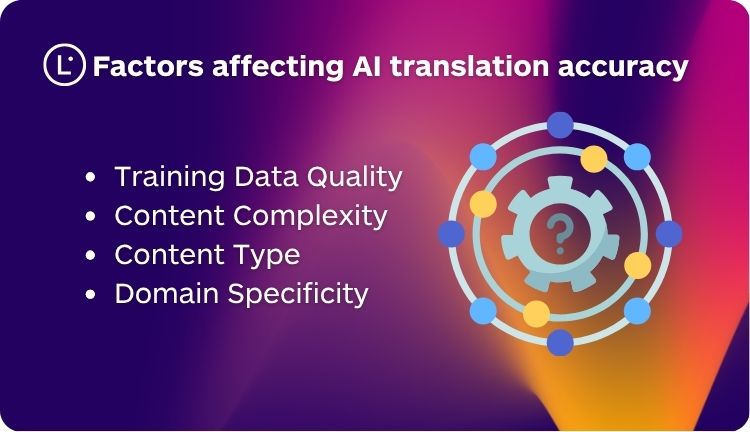
Measuring AI translation performance
AI quality metrics provide standardized ways to evaluate translation systems, though each has limitations. The most common evaluation methods include automated metrics and human assessment approaches.
BLEU score remains the most widely used automated metric, measuring n-gram overlap between machine translations and reference translations. While useful for broad comparisons, BLEU scores don’t capture semantic meaning or cultural appropriateness effectively.
METEOR offers improvements over BLEU by considering synonyms, stemming, and word order, providing better correlation with human judgment. BERT Score uses contextual embeddings to measure semantic similarity, offering more nuanced evaluation of meaning preservation.
Translation evaluation tools increasingly combine multiple metrics for comprehensive assessment. Modern evaluation frameworks like MQM (Multidimensional Quality Metrics) provide detailed error analysis, categorizing issues by type and severity to offer actionable feedback for improvement.
However, automated metrics have significant limitations. They struggle to evaluate cultural appropriateness, creative adaptation, or whether translations achieve their intended communicative purpose. This is why human evaluation remains crucial for comprehensive quality assessment.

AI vs human translation accuracy
The comparison between AI vs human translation accuracy reveals complementary strengths rather than a simple superiority contest. AI excels in speed, consistency, and handling large volumes, while humans provide cultural insight, creative adaptation, and contextual understanding.
Research shows that over 75% of translation professionals confirm that human input significantly enhances AI-driven translation quality. Human post-editing for accuracy has become standard practice, combining AI efficiency with human expertise to achieve optimal results.
AI systems consistently struggle with cultural nuances, humor, sarcasm, and creative content. A catchy marketing slogan might become nonsensical when translated literally, while human translators can adapt the concept creatively to resonate with target audiences.
Benchmarking AI translation tools against human performance reveals that AI achieves competitive results for straightforward, factual content but falls short for nuanced, creative, or culturally sensitive materials. The most effective approach combines both, using AI for initial drafts and human expertise for refinement and cultural adaptation.
Professional translators bring irreplaceable value in understanding context, adapting tone, and ensuring cultural appropriateness. They can explain complex concepts differently when direct translation isn’t possible, something current AI systems cannot do effectively.
How to improve AI translation quality
How to improve AI translation quality involves both technological enhancements and strategic implementation approaches. Diversifying training data represents the most fundamental improvement, ensuring models learn from balanced multilingual datasets rather than English-dominant sources.
Continuous learning systems that incorporate feedback loops help AI models improve over time. When human post-editors correct translations, these corrections can be fed back into the system to enhance future performance on similar content.
Source content optimization significantly impacts output quality. Writing clearly and concisely, using consistent terminology, avoiding idioms and cultural references, and maintaining standard sentence structures all contribute to better AI translation results. This approach, detailed in our guide on how to optimize content for better machine translation, can dramatically improve initial translation quality.
Context provision helps AI systems make better translation decisions. Providing background information, specifying target audience, and clarifying intended use can guide systems toward more appropriate translations.
Cultural consultants and specialized human reviewers add essential quality layers for sensitive content. Their expertise ensures translations not only convey accurate meaning but also resonate appropriately with target cultures.
Lara Translate: advanced accuracy through specialized training
Lara Translate addresses many traditional AI translation challenges through specialized training on professionally reviewed documents and curated parallel corpora. Unlike general-purpose language models trained on web-scale data, Lara focuses specifically on business and professional translation needs.
The system’s training approach emphasizes accuracy in neural MT by using high-quality, domain-specific datasets. This specialized focus enables Lara to achieve superior performance for business contexts while maintaining the speed advantages of AI translation. The platform particularly excels with non-English language pairs, addressing a common weakness in general AI translation systems.
Lara’s architecture supports integration with existing business workflows through standards like the Model Context Protocol (MCP), enabling seamless incorporation into professional translation environments. This technical approach ensures that accuracy improvements translate into practical business benefits.
FAQ
What is the average accuracy rate of AI translation tools?
Accuracy rates of top AI translators vary significantly by language pair and content type. Popular systems achieve 80-90% accuracy for major languages like Spanish, French, and German, but drop to 55-70% for less common languages. Technical and creative content generally shows lower accuracy rates than straightforward factual text.
How do you measure AI translation accuracy objectively?
AI quality metrics include automated measures like BLEU scores, METEOR, and BERT Score, which compare translations against reference versions. However, comprehensive evaluation requires human assessment of cultural appropriateness, meaning preservation, and communicative effectiveness—aspects that automated metrics often miss.
Why does AI translation accuracy vary between languages?
AI accuracy for different languages depends heavily on training data availability and linguistic similarity to English. Languages with extensive digital text archives and structural similarity to English achieve higher accuracy. Factors like complex grammar, cultural specificity, and limited training resources reduce accuracy for other languages.
When should businesses use human translators instead of AI?
Human post-editing for accuracy becomes essential for marketing materials, legal documents, medical content, and any communication where cultural sensitivity matters. Creative content, technical documentation, and brand messaging typically require human expertise to ensure appropriate adaptation beyond literal translation.
Can AI translation accuracy be improved for specific industries?
Industry-specific accuracy improvements come through specialized training data, custom glossaries, and domain adaptation. Systems trained on medical, legal, or technical corpora perform better in those fields. Our comprehensive guide to business document translation explores these specialized applications in detail.
This article is about
- Understanding current AI translation accuracy levels and how they vary across different languages and content types
- Exploring the key factors affecting AI translation accuracy including training data, content complexity, and cultural context
- Learning about AI quality metrics and translation evaluation tools used for measuring AI translation performance
- Comparing AI vs human translation accuracy and understanding when each approach works best

